Marcelo Fiszman
Discovering novel drug-supplement interactions using a dietary supplements knowledge graph generated from the biomedical literature
Jun 24, 2021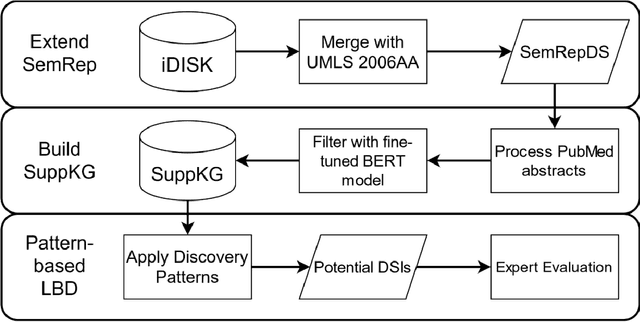


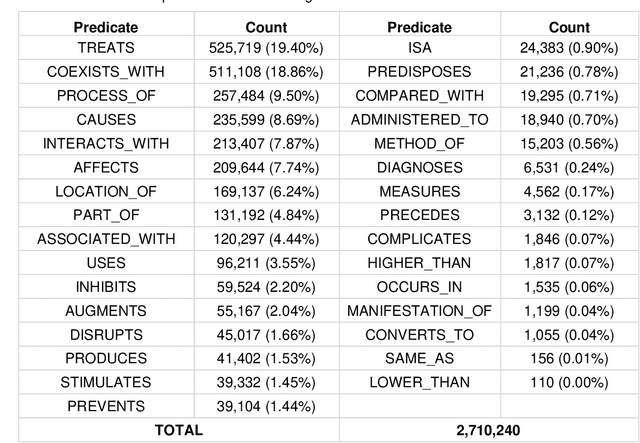
Abstract:OBJECTIVE: Leverage existing biomedical NLP tools and DS domain terminology to produce a novel and comprehensive knowledge graph containing dietary supplement (DS) information for discovering interactions between DS and drugs, or Drug-Supplement Interactions (DSI). MATERIALS AND METHODS: We created SemRepDS (an extension of SemRep), capable of extracting semantic relations from abstracts by leveraging a DS-specific terminology (iDISK) containing 28,884 DS terms not found in the UMLS. PubMed abstracts were processed using SemRepDS to generate semantic relations, which were then filtered using a PubMedBERT-based model to remove incorrect relations before generating our knowledge graph (SuppKG). Two pathways are used to identify potential DS-Drug interactions which are then evaluated by medical professionals for mechanistic plausibility. RESULTS: Comparison analysis found that SemRepDS returned 206.9% more DS relations and 158.5% more DS entities than SemRep. The fine-tuned BERT model obtained an F1 score of 0.8605 and removed 43.86% of the relations, improving the precision of the relations by 26.4% compared to pre-filtering. SuppKG consists of 2,928 DS-specific nodes. Manual review of findings identified 44 (88%) proposed DS-Gene-Drug and 32 (64%) proposed DS-Gene1-Function-Gene2-Drug pathways to be mechanistically plausible. DISCUSSION: The additional relations extracted using SemRepDS generated SuppKG that was used to find plausible DSI not found in the current literature. By the nature of the SuppKG, these interactions are unlikely to have been found using SemRep without the expanded DS terminology. CONCLUSION: We successfully extend SemRep to include DS information and produce SuppKG which can be used to find potential DS-Drug interactions.
Drug Repurposing for COVID-19 via Knowledge Graph Completion
Oct 19, 2020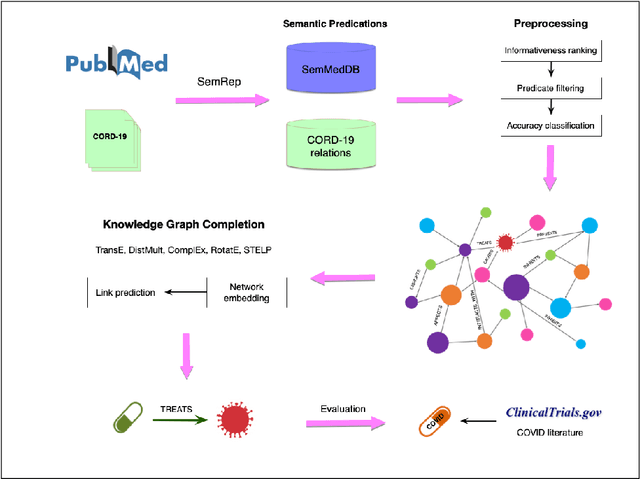
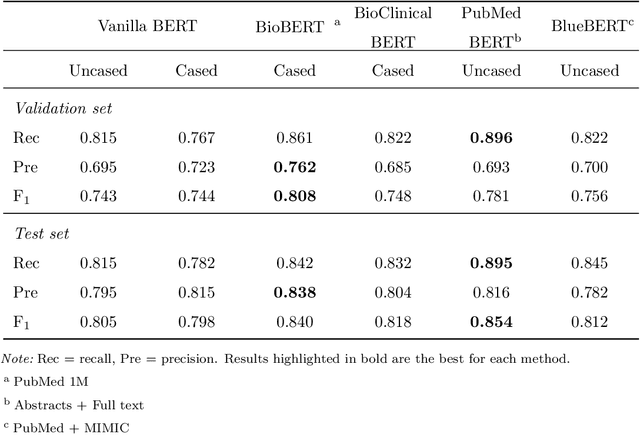
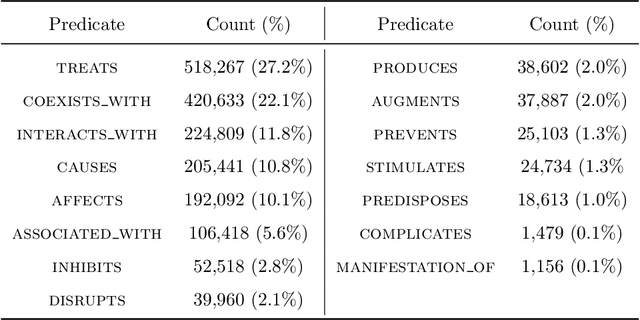
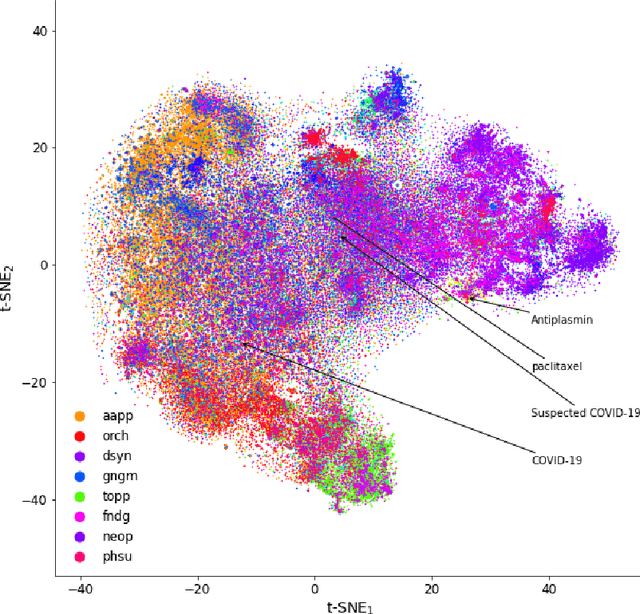
Abstract:Objective: To discover candidate drugs to repurpose for COVID-19 using literature-derived knowledge and knowledge graph completion methods. Methods: We propose a novel, integrative, and neural network-based literature-based discovery (LBD) approach to identify drug candidates from both PubMed and COVID-19-focused research literature. Our approach relies on semantic triples extracted using SemRep (via SemMedDB). We identified an informative subset of semantic triples using filtering rules and an accuracy classifier developed on a BERT variant, and used this subset to construct a knowledge graph. Five SOTA, neural knowledge graph completion algorithms were used to predict drug repurposing candidates. The models were trained and assessed using a time slicing approach and the predicted drugs were compared with a list of drugs reported in the literature and evaluated in clinical trials. These models were complemented by a discovery pattern-based approach. Results: Accuracy classifier based on PubMedBERT achieved the best performance (F1= 0.854) in classifying semantic predications. Among five knowledge graph completion models, TransE outperformed others (MR = 0.923, Hits@1=0.417). Some known drugs linked to COVID-19 in the literature were identified, as well as some candidate drugs that have not yet been studied. Discovery patterns enabled generation of plausible hypotheses regarding the relationships between the candidate drugs and COVID-19. Among them, five highly ranked and novel drugs (paclitaxel, SB 203580, alpha 2-antiplasmin, pyrrolidine dithiocarbamate, and butylated hydroxytoluene) with their mechanistic explanations were further discussed. Conclusion: We show that an LBD approach can be feasible for discovering drug candidates for COVID-19, and for generating mechanistic explanations. Our approach can be generalized to other diseases as well as to other clinical questions.
 Add to Chrome
Add to Chrome Add to Firefox
Add to Firefox Add to Edge
Add to Edge